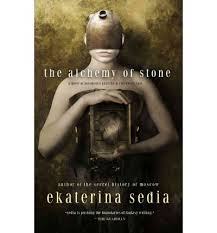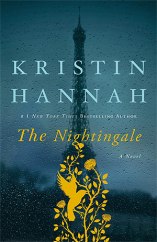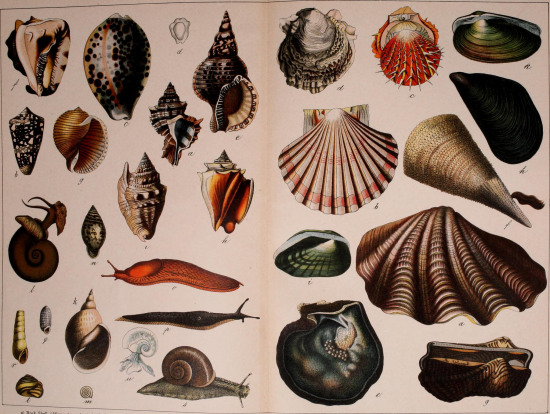We spent the morning in Cairo then headed for the Giza plateau on the west side of the Nile around noon. It takes an hour to get there by car. The dusty main access road to the site parallels an irrigation channel, and the roadway is shared by all manner of vehicles and donkey carts.
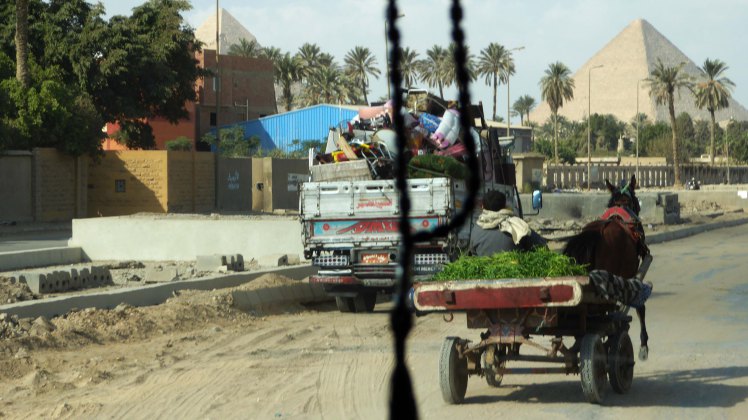 Surprisingly, the pyramids are surrounded by a sprawling, but not necessarily modern, metropolis.
Surprisingly, the pyramids are surrounded by a sprawling, but not necessarily modern, metropolis.
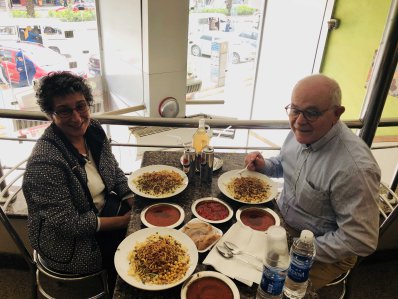 Kushari the Egyptian national dish is loaded with carbs.
Kushari the Egyptian national dish is loaded with carbs.
For lunch, we wanted to try Egyptian food. Mostafa took us to a local restaurant frequented by teenage girls in headscarves. We ordered kushari, considered to be the Egyptian national dish. It consists of lentils, pasta (at least 2 types), rice, caramelized onions, garlic, chickpeas and tomato sauce. All accompanied by several hot sauces on the side. With all those carbs, it’s surprising that Egyptians aren’t as big as the pyramids! Jane got a kick out of giggling school girls in headscarves sampling lipstick and makeup in the ladies’ room.
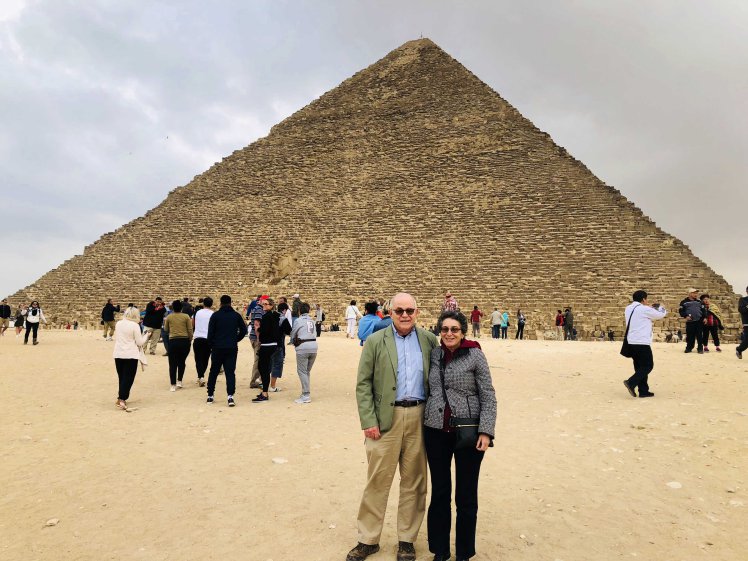 The pyramids are the only of the SEVEN WONDER OF THE ANCIENT WORLD to survive.
The pyramids are the only of the SEVEN WONDER OF THE ANCIENT WORLD to survive.
The pyramids at Giza are as spectacular in real life as in your imagination. The great pyramid of Khufu (Cheops) built around 2,589 BC, remained the largest structure on earth until it was surpassed in 1889 by the Eiffel Tower. Ironically the only known likeness of the Pharaoh Khufu is a 3-inch high ivory figure in the Egyptian museum.
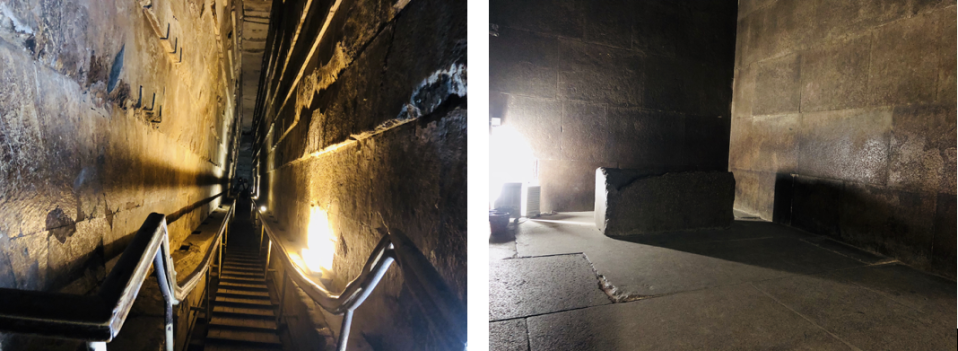 Narrow staircase inside Khufu’s Great Pyramid with its unadorned burial chamber.
Narrow staircase inside Khufu’s Great Pyramid with its unadorned burial chamber.
We decided to venture into the pyramid. Visitation was so light we didn’t have to wait at all. We climbed up about 20 courses of blocks to the entrance of the edifice. I have to admit that it was a rather unrewarding experience. You hunch over and scoot up claustrophobic ramps and stairways. You have to make way in the narrow passage for people returning down the same shared path. Fortunately, with the diminished tourism, there weren’t many people. Those returning all seem to be panting and sweating. It doesn’t take long to understand why. It’s hot inside and the burial chamber is devoid of any ornamentation- no hieroglyphics or anything except the unadorned bottom of a stone sarcophagus.
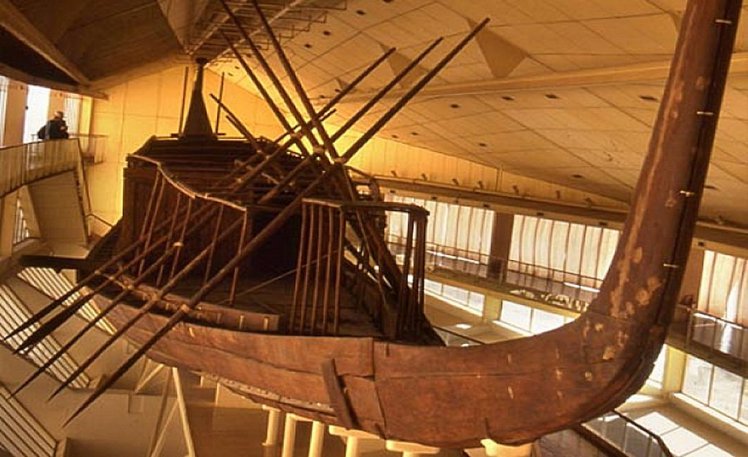 Pharaoh Kufu’s solar boat waiting to transport him to the afterlife.
Pharaoh Kufu’s solar boat waiting to transport him to the afterlife.
Once back to fresh air, walking around the great pyramid, you see the other 2 large pyramids and off in the distance the mounds of smaller and much earlier step pyramids. There also is a separate museum that houses the solar boat. Stored in a separate vault, the 40-meter long ship was to transport the Pharaoh to the afterlife. Boats like this are frequently illustrated in the other temples and tombs we visited.
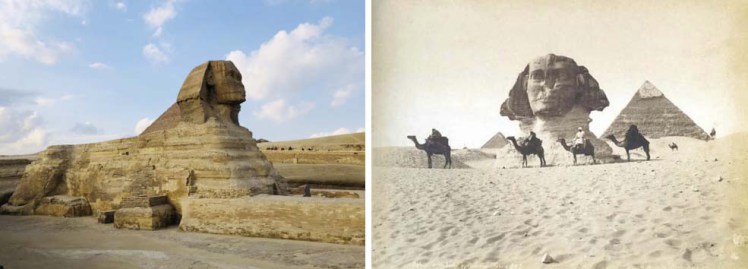 In the late nineteenth century the Sphinx was neck deep in sand.
In the late nineteenth century the Sphinx was neck deep in sand.
The Sphinx guards the causeway leading to the pyramids. In the nineteenth century sand covered the impressive figure up to its chest. In the evening, a sound and light program narrated by Sir Richard Burton, is presented. It provides a good overview of Egyptian history and some spectacular lighting on the monuments. On the chilly night we were there, a coat or blanket would have been welcomed.
 At night, a dramatic Sound & Light Show illuminates the monuments.
At night, a dramatic Sound & Light Show illuminates the monuments.
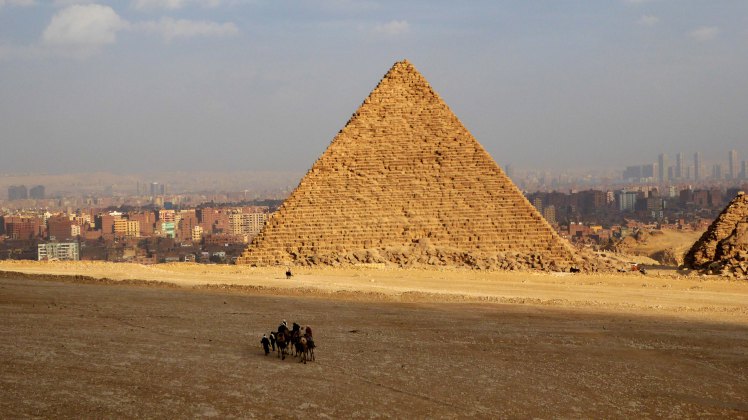 Pyramid with camels in the foreground and hazy city in background.
Advertisements
Share this:
Pyramid with camels in the foreground and hazy city in background.
Advertisements
Share this:
